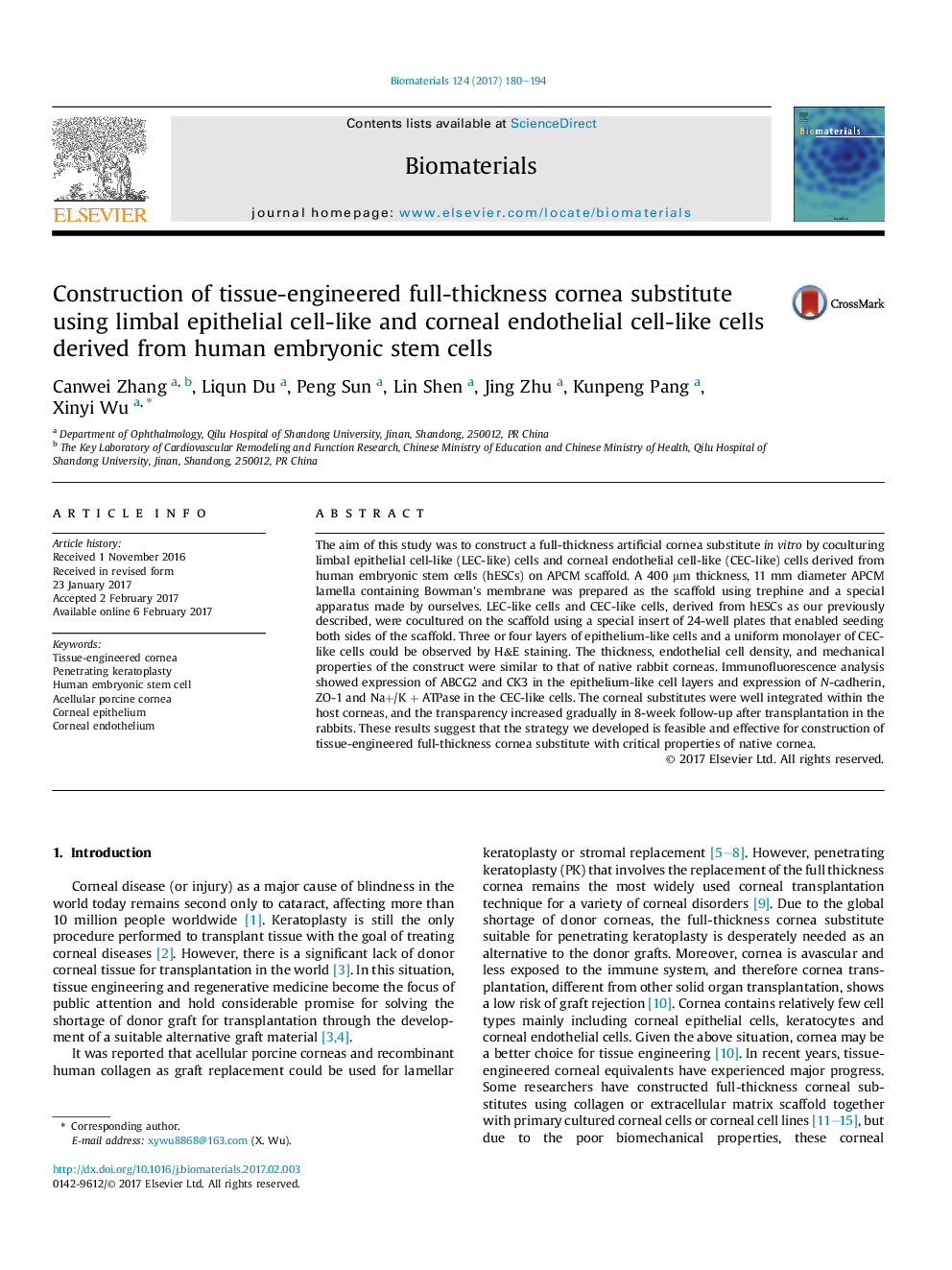| Article ID | Journal | Published Year | Pages | File Type |
|---|---|---|---|---|
| 6450841 | Biomaterials | 2017 | 15 Pages |
â¢3TAA was studied using the FTIR and Raman spectra.â¢The assignments of the IR bands observed in both spectra were reported.â¢The IR bands at 1682 and 1625 cm-1 support the presence of the dimeric species.â¢The Hirshfeld surface,NBO, AIM and MEPs calculations were studied.â¢The diagrams of the density of state of that acid have been also presented.
The aim of this study was to construct a full-thickness artificial cornea substitute in vitro by coculturing limbal epithelial cell-like (LEC-like) cells and corneal endothelial cell-like (CEC-like) cells derived from human embryonic stem cells (hESCs) on APCM scaffold. A 400 μm thickness, 11 mm diameter APCM lamella containing Bowman's membrane was prepared as the scaffold using trephine and a special apparatus made by ourselves. LEC-like cells and CEC-like cells, derived from hESCs as our previously described, were cocultured on the scaffold using a special insert of 24-well plates that enabled seeding both sides of the scaffold. Three or four layers of epithelium-like cells and a uniform monolayer of CEC-like cells could be observed by H&E staining. The thickness, endothelial cell density, and mechanical properties of the construct were similar to that of native rabbit corneas. Immunofluorescence analysis showed expression of ABCG2 and CK3 in the epithelium-like cell layers and expression of N-cadherin, ZO-1 and Na+/K + ATPase in the CEC-like cells. The corneal substitutes were well integrated within the host corneas, and the transparency increased gradually in 8-week follow-up after transplantation in the rabbits. These results suggest that the strategy we developed is feasible and effective for construction of tissue-engineered full-thickness cornea substitute with critical properties of native cornea.
